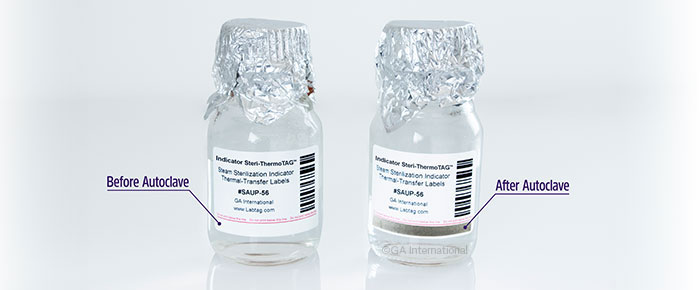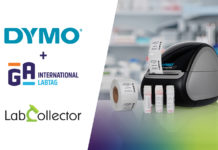
Ink is among the most common substances in all sectors, from healthcare and medicine to the automotive industry, construction, and educational institutions. While every facility has several pens on hand at any given time, ink technologies are also used in various ways that are just as integral to the workflows of scientists, technicians, and healthcare professionals.
Label printing ink
Perhaps the most important use of ink in not only healthcare and research but many industrial sectors as well, label printing is a crucial component of every experimental method and diagnostic assay. Utilizing ink to print labels with barcodes is necessary to track and trace samples, reagents, containers, and shipped packages, enabling scientists and healthcare workers to mitigate errors and increase the speed and capacity of the workflow.
There are several types of inks used for label printing:
Digital printing methods: Inkjet and laser printers depend on printing ink and toner cartridges, respectively. These methods utilize sheets of labels, are relatively cheap to run, and can provide high-quality color images; however, they are typically not suited for exposure to harsh solvents.
Thermal printing methods: Thermal-transfer and direct thermal printers utilize different types of ink. Thermal-transfer printers rely on an ink ribbon that is transferred to the label using a heated print head. There are three different types of ribbons: wax, resin, and wax/resin combination ribbons. Resin ribbons provide optimal resistance to nearly every harsh laboratory environment, including exposure to organic solvents. In contrast, direct thermal labels are coated with an ink that changes color in response to heat from the print head. Typically, direct thermal labels cannot be used for protocols that involve chemical exposure. However, EDCS & DTU-class labels are compatible with DYMO-450 printers and direct thermal printers, respectively, and show excellent resistance to many laboratory conditions, including chemical exposure.
Sterilization indicator ink
Sterilization is an integral part of medicine and science, and indicator tape is essential to include with all materials destined to be sterilized, whether placed in a steam autoclave, gamma irradiator, or ethylene oxide sterilizer. A different type of indicator ink is required for each method; however, the principle remains the same: the tape will change color in response to the presence of either intense heat or chemical exposure.
Photocatalyst activity indicator ink
Photocatalytic materials are considered self-cleaning due to the application of a photocatalytic product, such as titanium dioxide, which promotes the destruction of microbes by generating reactive oxygen species in response to light. They can also reduce the adhesion of microbes by altering surface energy. These coatings have been utilized in a number of healthcare settings and, more recently, have been studied in depth due to the COVID-19 pandemic. They may also soon play a role in preventing antibiotic-resistant bacteria, such as methicillin-resistant Staphylococcus aureus (MRSA), from lingering as well.
When producing photocatalytic surfaces, it’s often necessary to detect the photocatalyst’s presence and measure its activity. In fact, it’s considered an ISO standardized test for industrially-produced photocatalytic materials. That’s where photocatalytic ink comes into play: it is applied via pen, brush, or drawdown bar and changes color when it comes in contact with a photocatalytic surface exposed to UV light
Food freshness ink
Several years ago, scientists were trying to devise a way to monitor food freshness chemically without having to guess expiration dates or open the package. Most of the methods conceived were relatively expensive, with labels that need to be stored in freezing conditions, preventing them from being cost-effective (a significant reason why they aren’t typically found on packaging in retail grocery stores). One group from the Queen’s University Belfast in Ireland decided to design a chemical indicator system that could be made cheaply, stored at room temperature and activated when needed. To do this, they used an ammonia-sensitive indicator layer film pressed onto a second film made of an ammonia-generating adhesive layer. The label, which initially starts with a yellow color, changes to blue when activated by pressing both layers together. As ammonia is released from the top layer in a temperature-dependent manner, the label gradually turns back to yellow, which is used to mark food freshness.
LabTAG by GA International is a leading manufacturer of high-performance specialty labels and a supplier of identification solutions used in research and medical labs as well as healthcare institutions.
Reference:
- Mills A, et al. Novel time-temperature and ‘consume-within’ indicator based on gas-diffusion. Chem Commun. 2016;52:13987.



